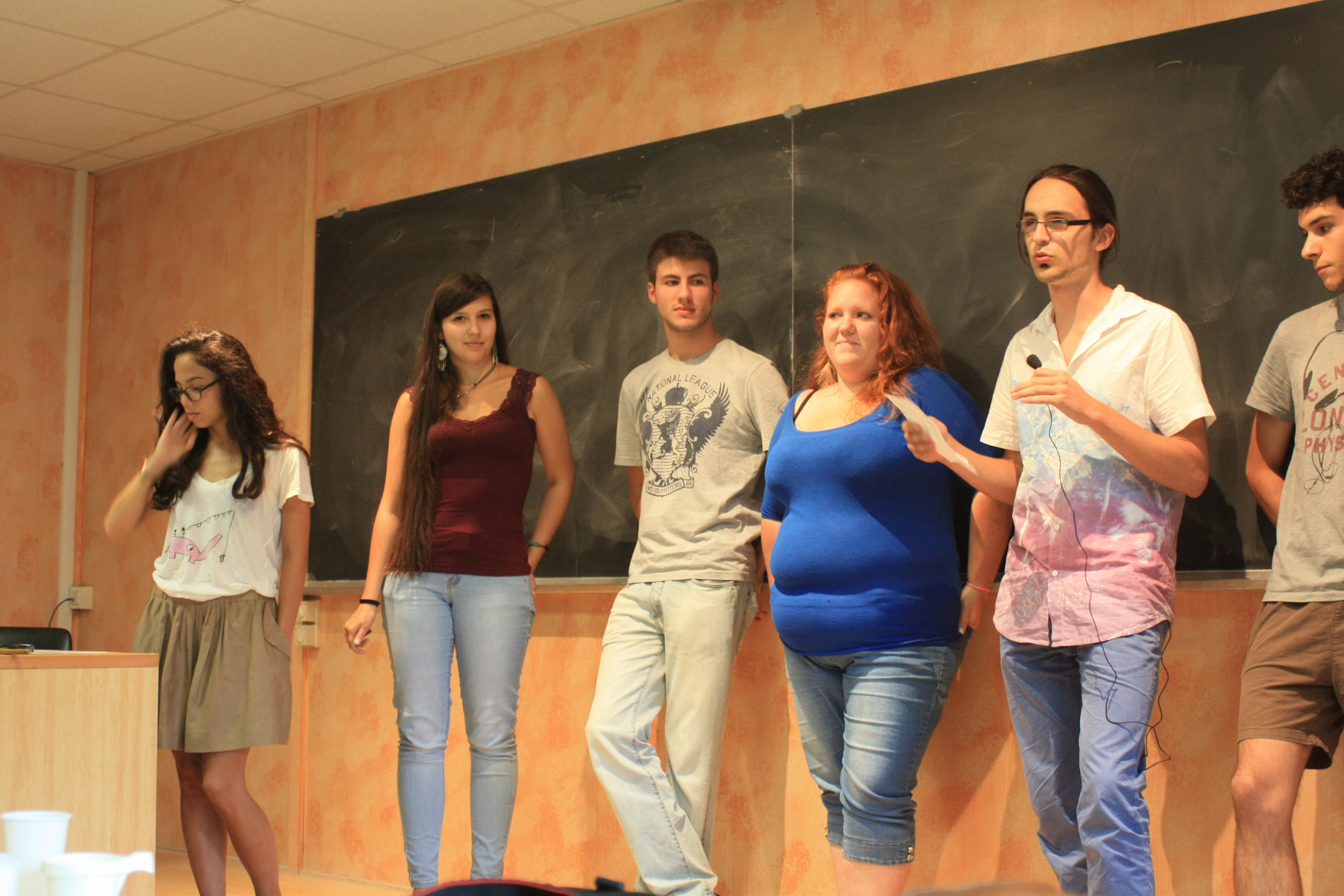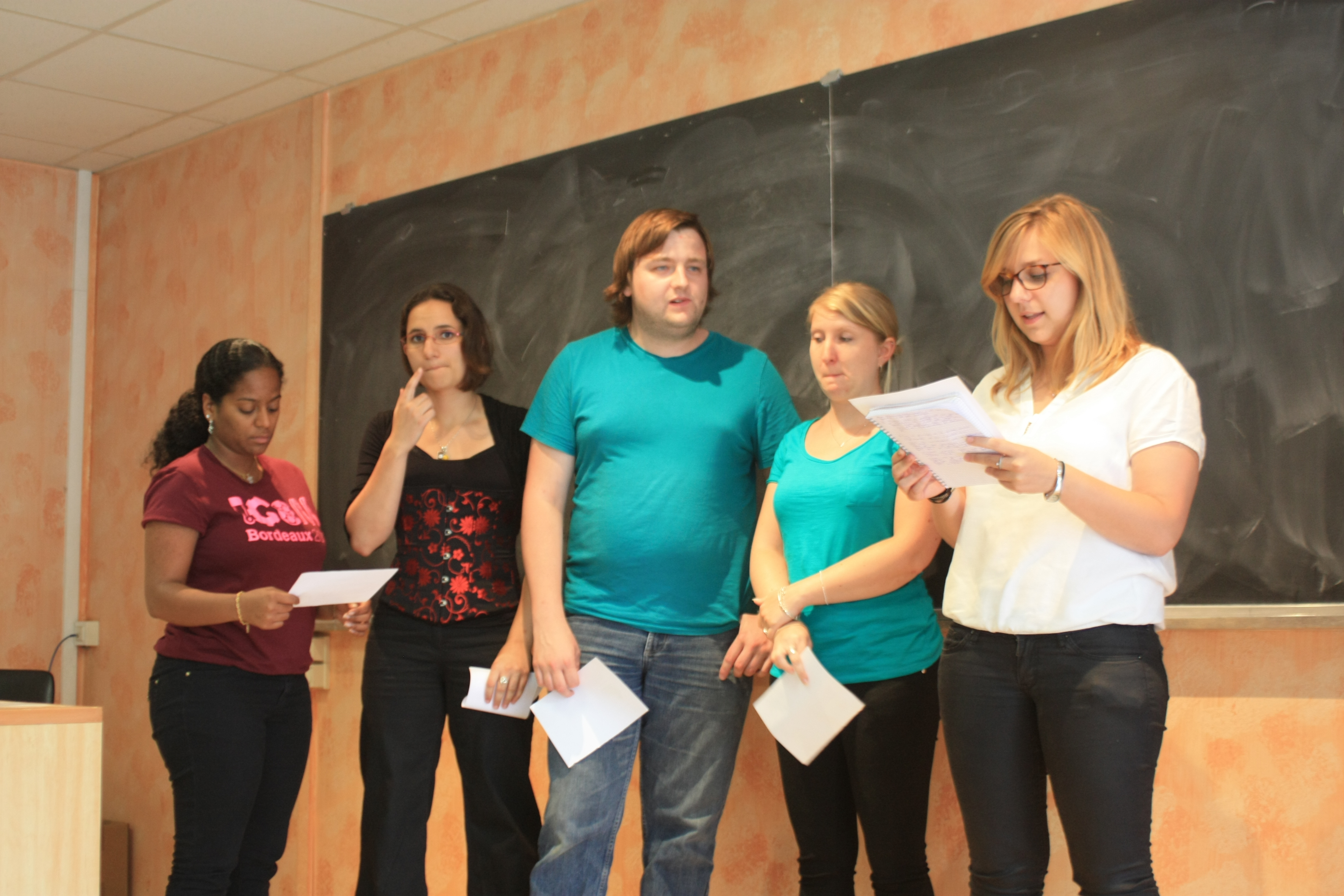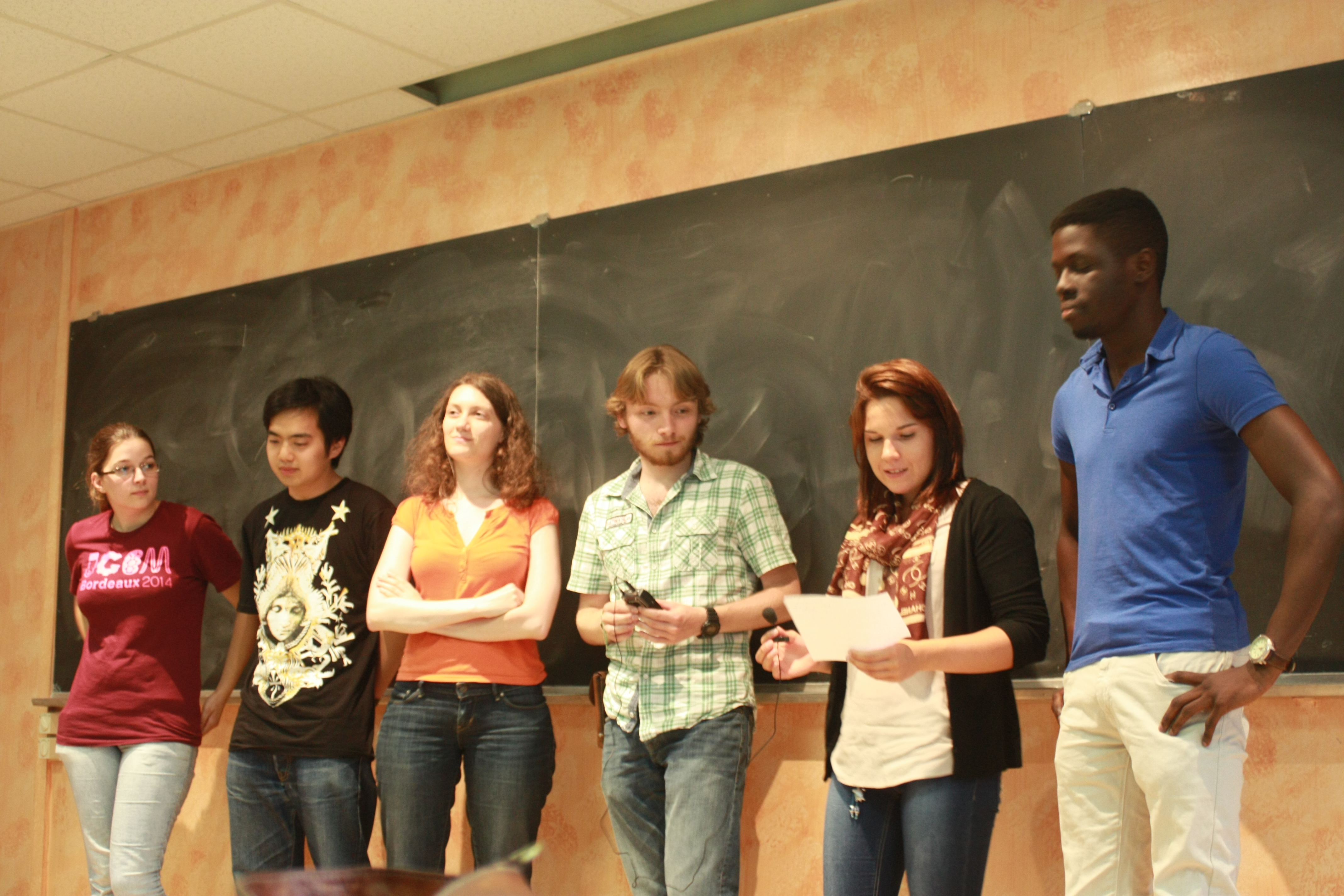Team:Paris Saclay/Ethics/Round Table
From 2014.igem.org
(→Round Table) |
Fanny Boulet (Talk | contribs) |
||
| (One intermediate revision not shown) | |||
| Line 1: | Line 1: | ||
{{Team:Paris_Saclay/ethics_header}} | {{Team:Paris_Saclay/ethics_header}} | ||
| - | = | + | <br/><br/> |
| + | =French iGEMers discussion= | ||
Latest revision as of 01:19, 18 October 2014

Contents |
French iGEMers discussion
Summer 2014 – the Parisian teams (Bettencourt, Evry and Saclay) decided to organize a French meetup at Paris-Sud University. They were joined by Bordeaux and Lyon.
During the event, our team suggested to raise some ethical issues about synthetic biology and Bio-Art as our project is based on ethical reflection. We thought that having the points of view of teams in other tracks would be interesting.
Bio-art
To begin the discussion, we asked what Bio-art meant to the participants. This question provoked a heated debate, as it is very difficult to obtain a specific definition. Indeed, Bio-art can include many things because there are no exact boundaries for what constitutes "art." A simple modification of a bacterium could be seen as Bio-art, as well as a "modification" of a human body. Behind the meaning of art, there is much human thought and interpretation. Science and art are similar when they look for something new. Since Bio-art involves biology and art, an important question was raised: what aspect should be more represented? Is one of these two aspects more visible than the other? For instance, if the scientific aspect is more visible, we may miss the artistic trait, and only think that it is a scientific work. Thus, could someone be a scientist as well as an artist? Are the two titles compatible? We thought that artistic and scientific traits could coexist together in a person; however, according to the background of the person, one aspect may prevail over the other. Art is also a way to report uncommon practices and to raise questions about established facts. Science allows to bring a different perepecive to the artist in order to deliver their message.
Media in art is already very diverse: blackboard, stone, body expression… Thanks to biology a new medium appears: living beings.
Biology
However, can we define precisely what a living being really is? Synthetic biology raises this question. Is there a limit to tinkering with nature? We realized that we did not share the same definition of life. For some of us, a living organism is something that is able to reproduce itself. However, a computer program could also reproduce itself. Would it therefore be a living thing as well?
For example a lot of grains (such as corn and wheat) belong to cultivars that are selected by humans according to their advantages: yield, resistance to pests… but we do not call them GMOs (Genetically Modified Organisms)! Whenever someone alters the genome, their responsibility is very important because there is no fundamental difference between making a hybrid and making a GMO. If there is a human desire to create a certain cultivar, it may be just a more time-consuming version of a genetic modification made directly in the laboratory.
Recently we have been introduced to some GMOs such as:
- Alba rabbit from Eduardo Kac (Febrary 2000). The use of fluorescence is innovative.
- Plant from Eduardo Kac (2003-2008). This hybrid plant comes from the cross between human and plant DNA.
- Human bio-art with Marion Laval-Jeantet’s work. Indeed, she transfused horse’s blood in order to test “limits of the embodied conscious”.
Basis of art
An important question must be raised: Is the use of animals in art considered as animal abuse? Is the animal’s pain the only criterion that we should consider when we use animals in art? We believe that it should not be the only one, but it should be primordial for the decision and should be very well questioned. After all, it is the artist’s choice and they should justify their choice to use living beings in their work. But the distinction between plants and animals is not really based or justified because the only fundamental thing that differentiates is the cell structure. We took for example the sea anemone. Conceptually, many people associate the anemone with a plant because, it’s very far from the definition of an animal, yet it is a member of the animal kingdom. So for this question, we concluded that what distinguishes two living organisms is intelligence which is why humans are more disturbed by the killing/genetic modification of a mouse than of bacteria, a plant or an anemone. Man will have more qualms about manipulating a being with whom he interacts.
Ethics
Some artists use this new concept to denounce the use of transgenic organisms. We strongly believe that it is a huge paradox to denounce the use of transgenic methods by using transgenic organisms themselves.
Bio-art is a useful tool to show our thoughts but we should not forget the limits we defined. It may also be an issue because some people who are not familiar with biology could be afraid of genetic manipulation. We believe that humans always try to innovate and this innovation with biological material may be dangerous.
Some skeptics of contemporary art raise issues about the current experimentation on living beings and its “normalization”. Bio-art may be part of this fear because it opens a huge window to a world we do not know yet. However, Bio-art raises all these questions and make people aware about these current issues. Indeed, interest about biology has increased since the creation of Bio-art.
However, scientists and artists are very different because they have different backgrounds and views on biology and more precisely about safety.
Bio-art is a new tool for artistic communication and it allows to show an innovative science.
Bio-art may be considered as a new step in the future of art that will shake pre-existing foundations.
 "
"







